Convict women of the First Fleet
Learning intention
Students are learning to:
- Analyse journal entries as historical sources.
- Interpret historical events through drama, art and written sources.
Success criteria
Students will be successful when they can:
- Identify the reasons why convict women committed crimes.
- Explain the challenges of a female convict transported on a First Fleet ship.
Student Activities
Setting the Scene
The shipboard journey of the First Fleet female convicts is examined through primary source analysis.
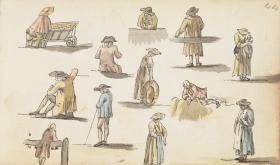
Tableau - In her shoes
Students engage with a working-class woman’s life in England.
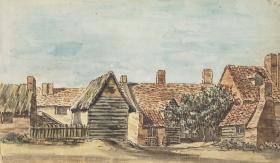
Convict identity: my story
Students analyse journal entries to uncover more details about the lives of convict women on the First Fleet.
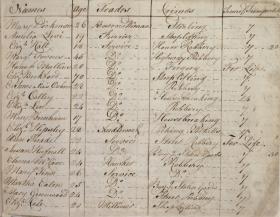
Shipboard life
Students discover information about the convict women’s eventful journey onboard ship as part of the First Fleet.
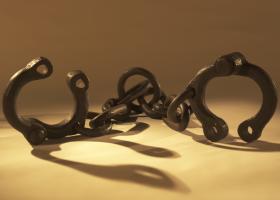
A letter home
Students write a letter home from a convict woman’s perspective as they identify some of the emotional aspects of the journey.
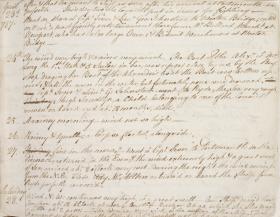
Arrival
Students imagine convict women’s feeling and conversations on the day of arrival at Port Jackson in the context of the traditional owners of the land.
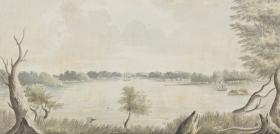
NSW Syllabus for the Australian Curriculum History K-10
- HT2-3 describes people, events and actions related to world exploration and its effects
- HT2-4 describes and explains effects of British colonisation in Australia
- HT2-5 applies skills of historical inquiry and communication
Stories of the First Fleet, including reasons for the journey, who travelled to Australia, and their experiences following arrival (ACHHK079)
Students:
- identify reasons for the voyage of the First Fleet and explain why various groups were passengers
- describe the establishment of the British colony at Port Jackson
- using a range of sources, investigate the everyday life of ONE of the following who sailed on the First Fleet and lived in the early colony: a soldier, convict, ex-convict, official
Comprehension: chronology, terms and concepts:
- respond, read and write, to show understanding of historical matters
- use historical terms
Analysis and use of sources:
- locate relevant information from sources provided
Perspectives and interpretations:
- identify different points of view within an historical context
Empathetic understanding:
- explain how and why people in the past may have lived and behaved differently from today
Research:
- pose a range of questions about the past
- plan an historical inquiry
Explanation and communication:
- develop texts, particularly narratives
- use a range of communication forms (oral, graphic, written) and digital technologies
Continuity and change: changes and continuities due to British colonisation of Australia.
Cause and effect: reasons for a particular historical development
Perspectives: different points of view within an historical context
Empathetic understanding: how and why people in the past may have lived and behaved differently from today.
Significance: the importance and meaning of national commemorations and celebrations, and the importance of a person or event.
Contestability: historical events or issues may be interpreted differently by historians, eg British 'invasion' or 'settlement' of Australia.
Learning across the curriculum
- Critical and creative thinking
- Ethical understanding
- Intercultural understanding
- Literacy
Why did Europeans settle in Australia?
Stories of the First Fleet, including reasons for the journey, who travelled to Australia, and their experiences following arrival (ACHASSK085)
- investigating reasons for the First Fleet journey, including an examination of the wide range of crimes punishable by transportation, and looking at the groups who were transported
- investigating attitudes to the poor, the treatment of prisoners at that time, and the social standing of those who travelled to Australia on the First Fleet, including families, children and convict guards
Additional information
The following information supports the activities. Read the activities first.
Activity 6 Information
After your students have written the convict dialogue, consider rewriting it using convict language. Called ‘flash language’ these unique words and phrases were spoken in London and brought out to NSW by with the people who were now convicts. For information on how convicts spoke to one another, see the Talkin’ Like a Convict learning activity.
Source list for image details in student activities
A Letter home
Image 1: Arthur Bowes Smyth, Detail from Collection 01: Arthur Bowes-Smyth, illustrated journal, 1787-1789. Titled `A Journal of a Voyage from Portsmouth to New South Wales and China in the Lady Penrhyn, Merchantman William Cropton Sever, Commander by Arthur Bowes-Smyth, Surgeon - 1787-1788-1789'; being a fair copy compiled ca 1790, 22 March 1787-12 August 1789, compiled ca. 1790
Image 2: Arthur Bowes Smyth, Detail from Collection 01: Arthur Bowes-Smyth, illustrated journal, 1787-1789. Titled `A Journal of a Voyage from Portsmouth to New South Wales and China in the Lady Penrhyn, Merchantman William Cropton Sever, Commander by Arthur Bowes-Smyth, Surgeon - 1787-1788-1789'; being a fair copy compiled ca 1790, 22 March 1787-12 August 1789, compiled ca. 1790
Arrival
Image 1: Arthur Bowes Smyth, Detail from Collection 01: Arthur Bowes-Smyth, illustrated journal, 1787-1789. Titled `A Journal of a Voyage from Portsmouth to New South Wales and China in the Lady Penrhyn, Merchantman William Cropton Sever, Commander by Arthur Bowes-Smyth, Surgeon - 1787-1788-1789'; being a fair copy compiled ca 1790, 22 March 1787-12 August 1789, compiled ca. 1790